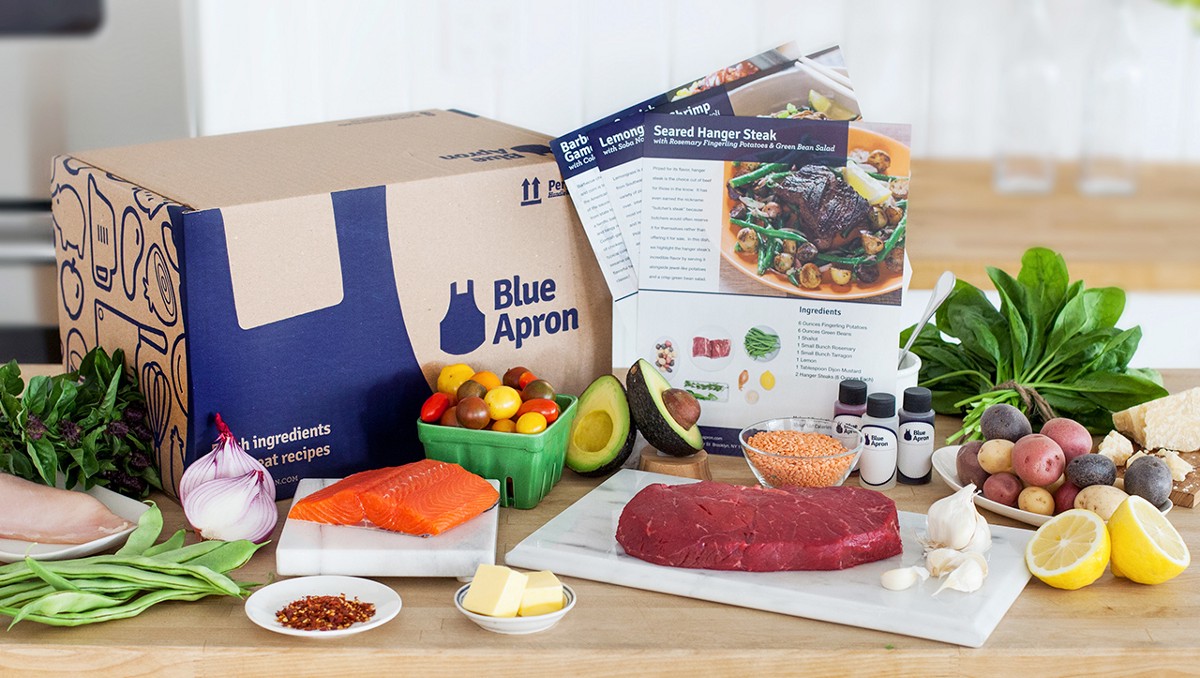
- Products
- Solutions
- Learn
- Partner
- Try Now

AN INTRODUCTION TO MEAL KITS
Meal kits have been revolutionizing the way people cook food. People have been preferring getting a meal kit with fresh ingredients delivered to their door over a take-out. These ready to make meal packages have everything from perfect portions of vegetables and proteins to the exact measurements of spices and oils. They come in servings for two or four, generally. A Meal kit is being seen as an efficient and convenient way of preparing meals as they it helps save trips to grocery stores and promotes as least wastage as possible. The calorie count per serving for the entire meal as well as the ingredients is clearly listed. A meal kit allows people to experiment with dishes and come up with eclectic meals just by following directions that are clearly stated and easy to execute.
The first meal kit delivery service called Middagsfrid was launched in 2007 in Sweden by Kicki Theander. The concept spread like wild fire in the forest thereafter. According to a Goldman Sachs research, it was estimated that the industry will be worth between $3 billion and $5 billion in less than 15 years. The meal kit industry is now worth $2.2 billion (2017).
THE EXISTING COMPETITORS
Some successful names in the meal kit delivery market include Blue Apron, HelloFresh, Home Chef, Sun Basket, Plated, Green Chef, Purple Carrot, Gobble and Marley Spoon with Blue Apron leading the meal kit delivery market with 40.3% of the share.
From Blue Apron‘s Glazed chicken, French Bread Style Pizzas, Korean Rice Cakes to Amazon’s Steak Au Poivre, Roasted Cod and Cannellini Bean, Ragout and Pesto to Walmart’s Chicken Tikka Masala, Thai Crab Curry with Jasmine Rice Spanish Paella to HelloFresh‘s Balsamic Fig Chicken, South Western Stuffed Peppers, Moo Shu Pork Tacos- the variety being offered to the users is nothing short of surreal.
AVERAGE SPENDING ON U.S. MEAL KITS
Gobble specializes in meals that are pre-chopped and have a preparation time of under 15 minutes. Accordingly, they command a higher per-meal price point than Blue Apron or HelloFresh, also justifying the stats about the higher spend by the users.
THE PRICING MODEL
According to CNBC’s trial run of meal delivery services,these meals cost $9.99 to $13.50 a portion. That’s a good deal compared to eating at a restaurant but costlier than shopping and cooking for yourself. The ingredients for those same meals would cost $3.98 to $11.90 at a nationwide food retailer, according to another CNBC analysis of prices. This clearly implies healthy, double-digit margins for the meal kit delivery firms, at least for ingredients. These kinds of price margins have also led the big players of the industry to knock the doors of the meal kit delivery market, thereby, grabbing the extremely immense opportunity.
AMAZON, AT IT
In August 2017, Amazon made an announcement that it will be launching its own meal kit delivery service. The company tested its new service in limited markets for AmazonFresh customers, including Seattle. Amazon offers approximately 17 different meals for these select customers to choose from, and their price ranges from $14.99 to $18.99 for a two-person meal, compared to Blue Apron‘s $59.94 subscription for two-person meals, delivered three times per week. Amazon doesn’t require customers to subscribe for weekly meal kits, something that companies like HelloFresh and Blue Apron have continued, but instead offer one-time purchase options. Plus with Amazon, you can select the meal you want to prepare, instead of waiting and seeing what meals are delivered. Amazon sure has a competitive advantage with its extensive delivery infrastructure and humongous customer base. It has around 85 million Prime subscribers in the United States, according to the latest estimate from Consumer Intelligence Research Partners. Also Amazon’s Meal Kits Launch led to Blue Apron‘s stock crashing down immediately. Read more about Amazon’s Meal Kits here.
WALMART: LEAVING NO STONE UNTURNED
Walmart launched their meal kits delivery after Amazon and Blue Apron. Walmart offers about 30 meal kits with the plus point being that Walmart sends you the kitchenware you need to make the meal. On an average, its charges range from somewhere around $32 to $79 for a meal for four. It tied up with Takeout Kit and Home Chef, both of which are responsible for fulfilling the orders and shipping them to customers’ doorsteps, while Walmart earns commission and a referral fee, as per The Street. Just like Amazon, each meal kit order from Walmart is a one-time purchase. To read more, click here.
YOUR NEXT MOVE
Meal kits are just another example of the popularity of the on demand economy. If you’re a budding entrepreneur, this market is calling out your name. It has a lot of potential, provided you have a virtual presence in terms of a website as well as an app like Uber for meal kits delivery. If you already have a conventional food delivery business, diversify a little with meal kits. Get yourself an app like Uber and you’ll be good to go!
The MVP for an On Demand Platform generally involves-
1. An Ordering App– Ordering by the customer occurs at the app or website interface where the menu of the meal kit provider will be uploaded- To manage demand.
2. A Delivery App– When a courier is on duty, they are logged into their courier phone app which tracks their location. On receiving an order, couriers decide whether or not they’ll be able to fulfill the order. And accordingly the first driver to claim the delivery, carries on with it- To manage supply.
3. A Management Dashboard– To moderate and control your critical operations.
To get your own on demand delivery app made, drop in an inquiry and our people would assist you further!
Subscribe to stay ahead with the latest updates and entrepreneurial insights!

Subscribe to our newsletter
Get access to the latest industry & product insights.





















